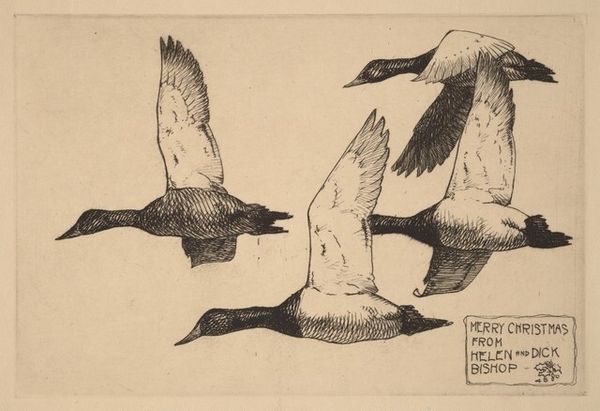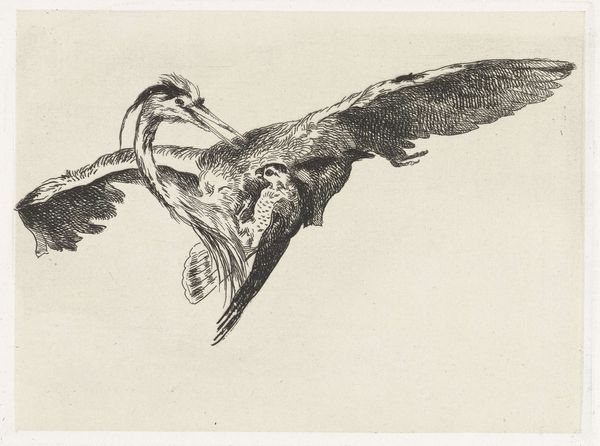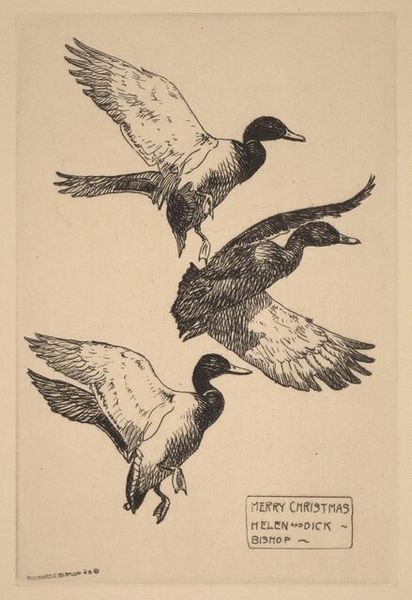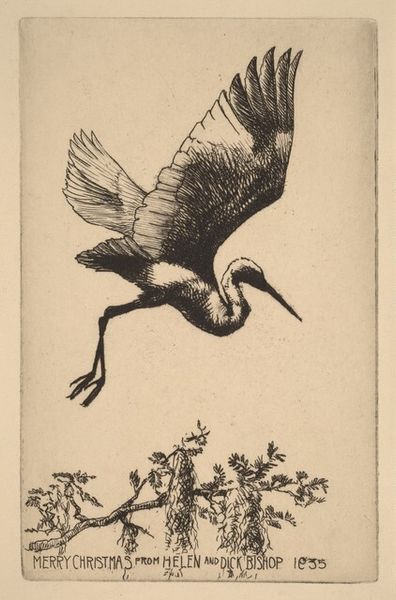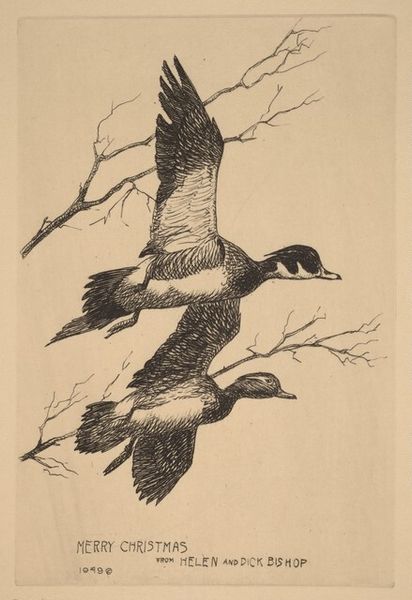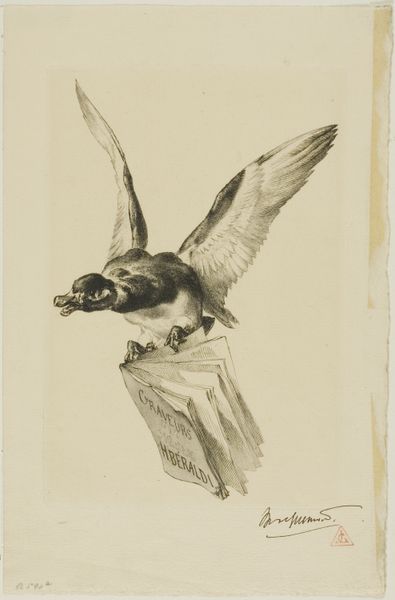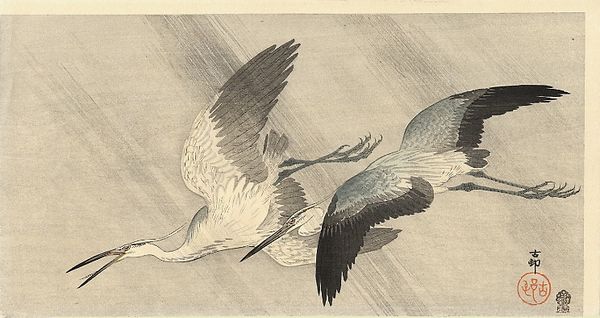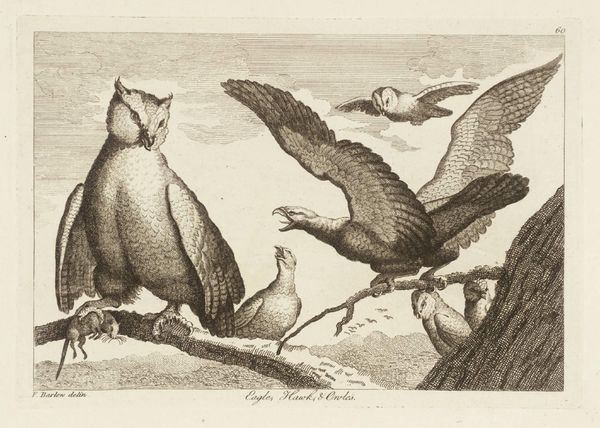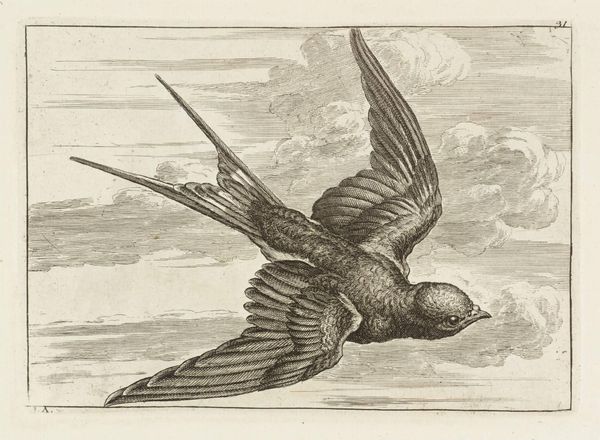
drawing, print, etching
#
drawing
# print
#
etching
#
old engraving style
#
landscape
#
pencil drawing
#
realism
Copyright: National Gallery of Art: CC0 1.0
Curator: Immediately, I am drawn to the striking dynamism conveyed in this small print. The dark, precise lines that depict these birds in flight creates such movement. Editor: This is a Christmas card etching from 1950, created by Helen and Richard Evett Bishop. Richard, often known as Dick, was an American artist particularly renowned for his depictions of waterfowl. It really speaks to a particular type of mid-century aesthetic. Curator: Indeed, observe the stark contrast achieved by the etching technique. The birds, presumably ducks, appear to almost leap off the pale ground, creating a compelling figure-ground relationship. And consider the compositional choice; by cropping the birds so tightly, we only see their descent, heightening that sense of downward motion. Editor: The Christmas card format is particularly interesting when considering Bishop’s wider artistic output. Etchings and prints were a democratic medium, something more accessible to the wider public. A Christmas card then becomes almost a miniature piece of affordable art intended for close friends and family. Curator: I appreciate how the medium is so integral to the overall meaning. The etching's fine, almost fragile lines give a certain lightness to the birds' wings and create an interplay of solid form and ethereal space. The inscription itself then takes on an important formal function within the print itself. Editor: Yes, I think considering this card in its social context is key. In the post-war years, mass-produced items grew more common, but there was still space for artists to participate in a culture of hand-made cards exchanged between loved ones, especially during a holiday increasingly commercialized. These objects contain a specific cultural nostalgia. Curator: Agreed, observing how Bishop wields line and space, the push and pull, gives great insight into the artist's attention to material and its properties. It certainly speaks to how powerful subtle articulations of form and light can be. Editor: Understanding its production as a card makes you consider how it may have functioned as an object of social exchange, beyond its simple aesthetic appeal, within its own cultural context. Curator: Indeed, by examining it, the piece offers many complex interactions—between form, feeling and historical circumstance—even within a limited format. Editor: Absolutely, considering the interplay of the artwork's personal sentiment, social function, and artistic expression opens up numerous angles to explore further.
Comments
No comments
Be the first to comment and join the conversation on the ultimate creative platform.
